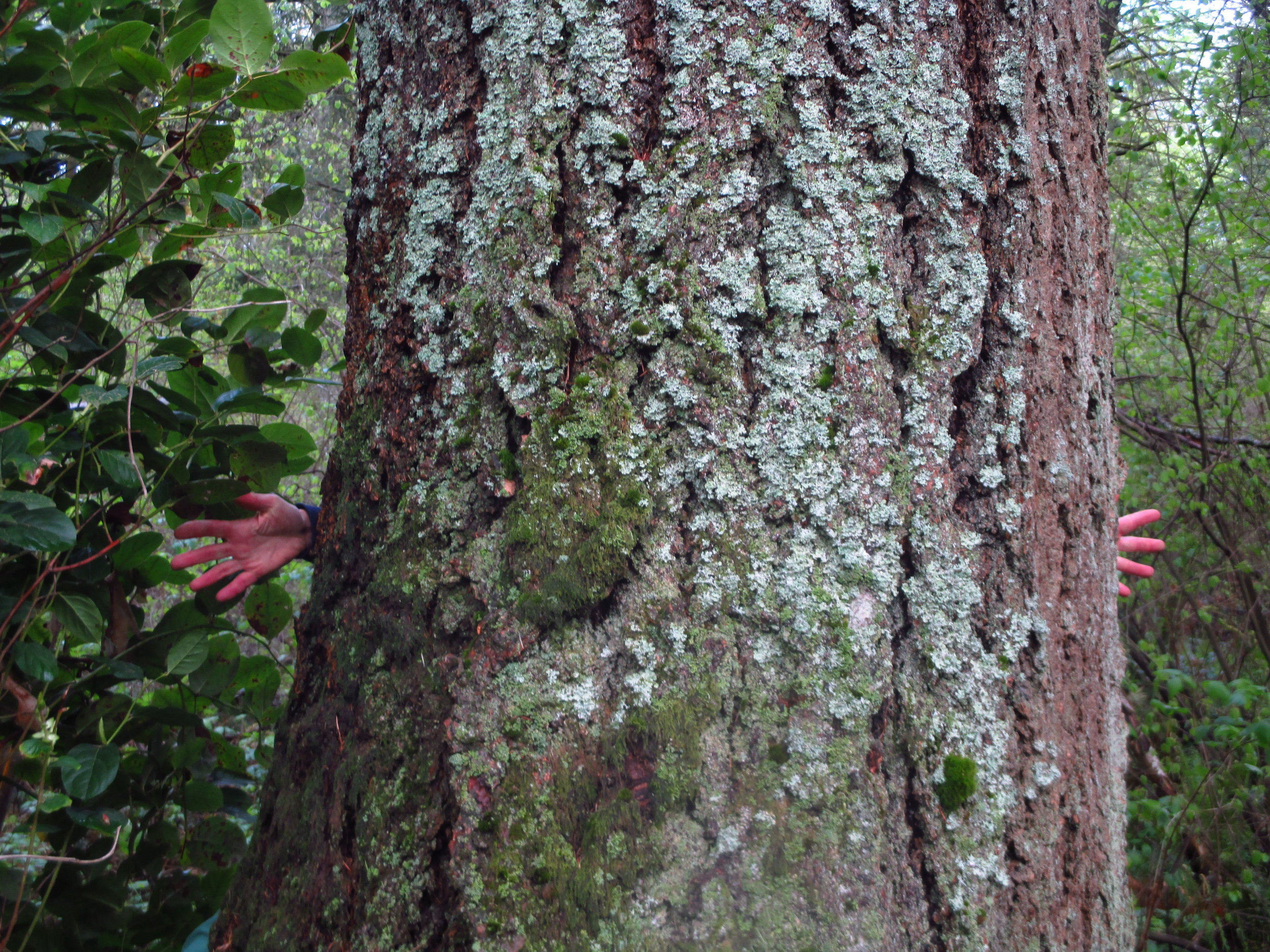After a long walk in a neighborhood woods today, I understand less and less what we mean when we describe a tree or a forest as "old-growth." There are many definitions--some uninformed, some vernacular, some scientific, many political. And this is a problem when the definition is used to push timber sales through as in "we are not logging old-growth." Does this mean we (the Department of Natural Resources, Weyerhauser, whoever) is not cutting down certain really really big trees or that they are not logging in old-growth forests?
One sparrow does not a summer make. One really big tree does not an old-growth forest make. As we should expect, trying to define a state of a certain forest--one that has been growing, changing, living, dying, responding to natural forces for a thousand years (or more or less)--is not a simple matter. Old forests are complex and they don't translate easily into numbers or words.
Alaska used to have a slogan that attempted to define its undefinability: "Alaska is a state of mind." And old-growth forest is like this, too--a state of the forest. And that state takes in many qualities--large standing trees, large standing snags (dead trees with broken tops), fallen trees, nurse logs, nurse stumps, a broken canopy, trees of different age classes, certain understory plants. A forest featuring these qualities is one that has seen little human disturbance.
This hundred-year-old tree doesn't make the >80 cm dbh cut (which translates as 100 Inches in circumference), yet it is an important part of an old-growth forest. This is along the Lewis River in Gifford Pinchot National Forest, WA. Photo by MM Ruth.
During my walk this morning, I talked with man who knew the woods and the flora well. I asked him if the trees in the woods were old-growth. He said no. They were big, but old-growth means original old-growth. I took this to mean the "virgin' old-growth--the massive trees that pre-date human disturbance. Which means that the trees I have been measuring and calling "old growth" are just really big second growth. In the woods where I was walking, this means the oldest trees started growing after the forest was clearcut sometime in at the turn of the 20th century. Which makes them 100+ years old. According to my fellow walker, these trees will only ever be "big second growth."
I am not sure I buy this, but I am intrigued by the idea.
And by the controversy surrounding what the Washington Department of Natural Resources (DNR) is doing in the forests of the Olympic Peninsula. A few weeks back, two timber sales were approved in an area of high-quality marbled murrelet habitat (aka old-growth forests, mature forest, late-successional forest) called the Olympic Experimental State Forest. The timber proposed for clear-cutting is not old--30-40 years old, most of it. However, those younger trees are in an area of old-growth forest--but outside the 100-meter buffer required around murrelet nesting sites. Removal of these younger, buffering trees is a problem for murrelets as the clear-cut allows for the incursion of nest predators, specifically Stellar's jays, which prey on murrelet eggs and chicks.
A young marbled murrelet chick is a vulnerable creature during its month-long development on the nest. This seabird depends on the coniferous coastal forests of the Pacific Northwest--forests we call old-growth, mature, old, older, late successional, and ancient. These terms may be synonymous. Or not.A precise definition is elusive, but critical to this threatened species. Photo by Tom Hamer, Hamer Environmental. Used with permission.
Removal of these trees by clearcutting is also a problem for the University of Washington. The University, like other state schools and institutions, receives financial benefit from certain state-forest timber sales. The recent timer sales in the Olympic Experimental State Forest are earmarked for UW...but UW scientist have contributed data to a major report that recommends emphasizing conservation efforts in this forest to achieve and maintain high-quality nesting habitat for the marbled murrelet. This includes the kind of clear-cutting DNR is proposing in a forest that should be managed using experimental silviculture methods that reflect the best-available science.
This latest timber sales show that DNR is still in the dark ages--using the equivalent of a club instead of a fine-edged blade to manage our state forests.
And thus, on March 31, Seattle Audubon, the Olympic Forest Coalition, and other conservation groups decided to sue the DNR over the proposed clearcuts in the Olympic Experimental State Forest. Today's Crosscut features an excellent article by Martha Baskin explaining the sale and the controversy and the plight of my favorite "chunky" seabird, the marbled murrelet.




